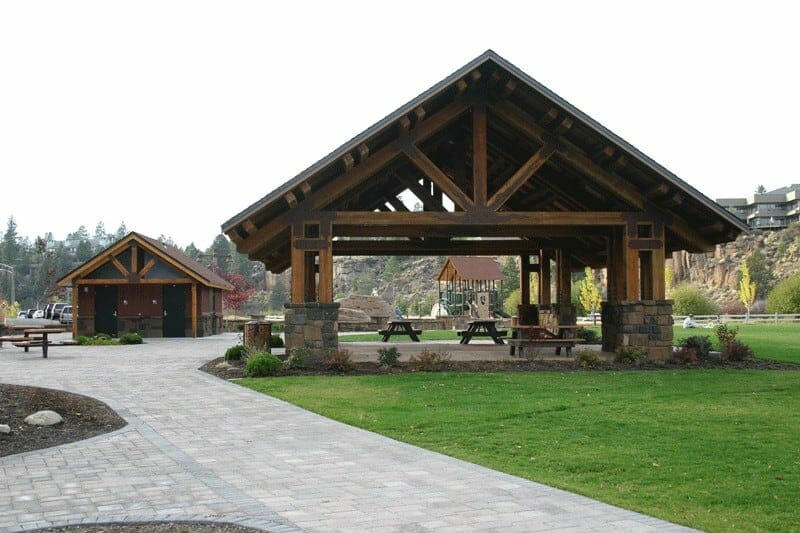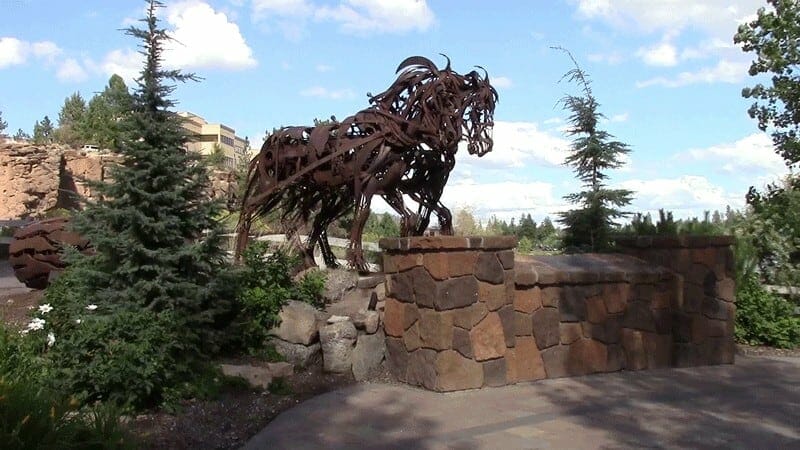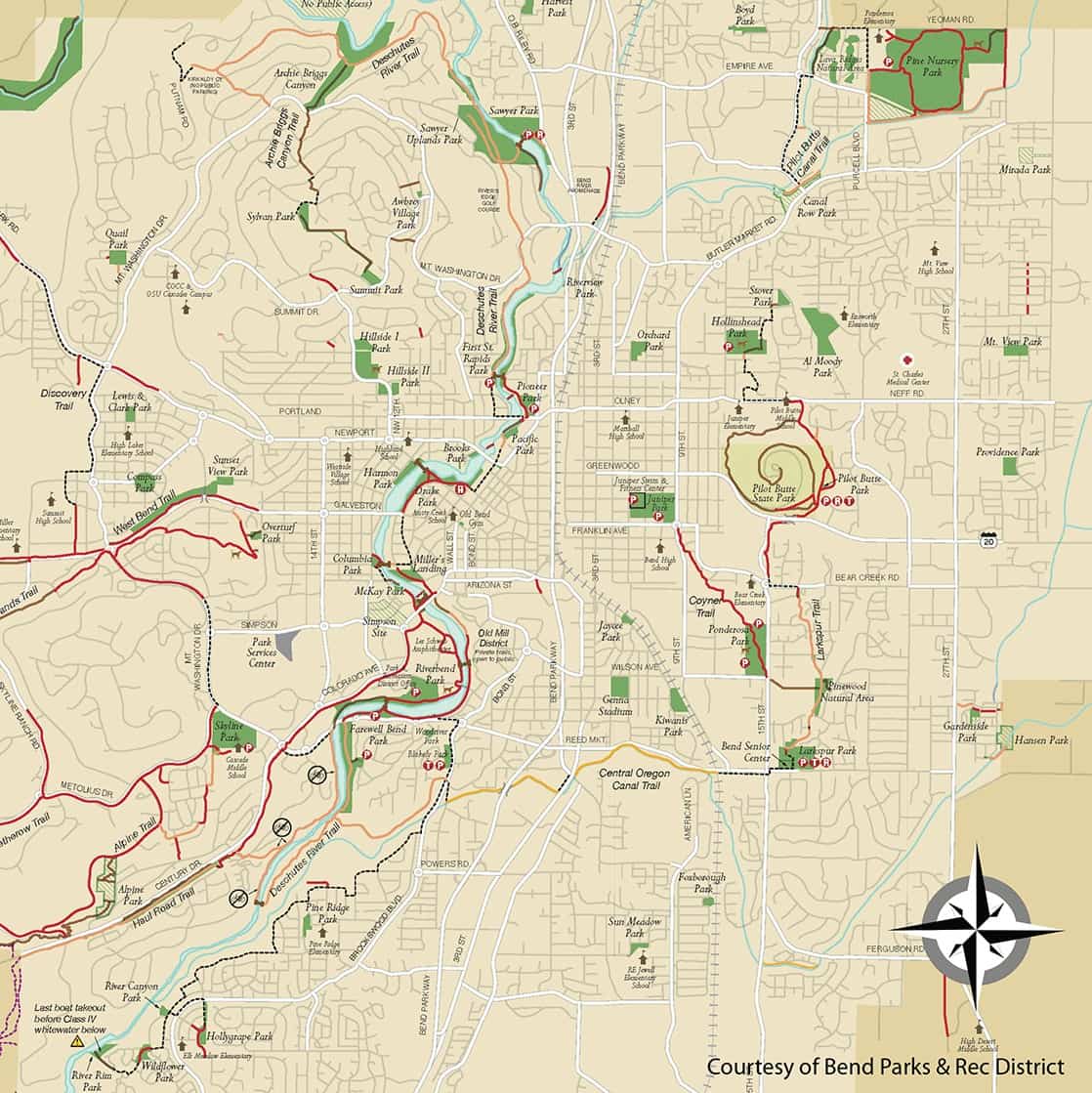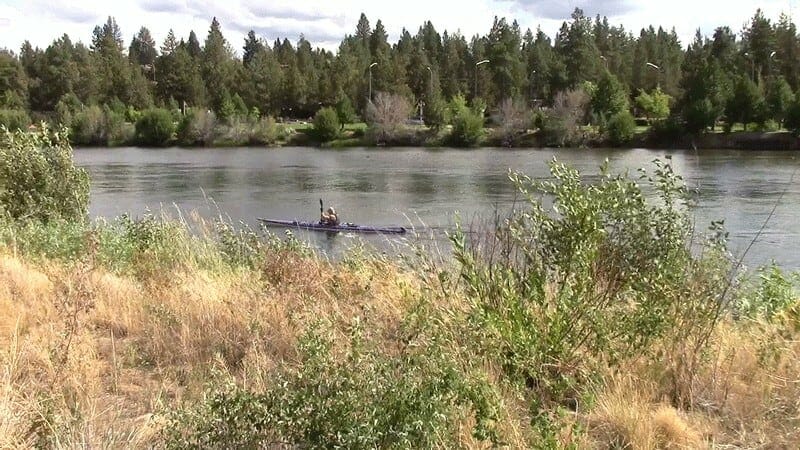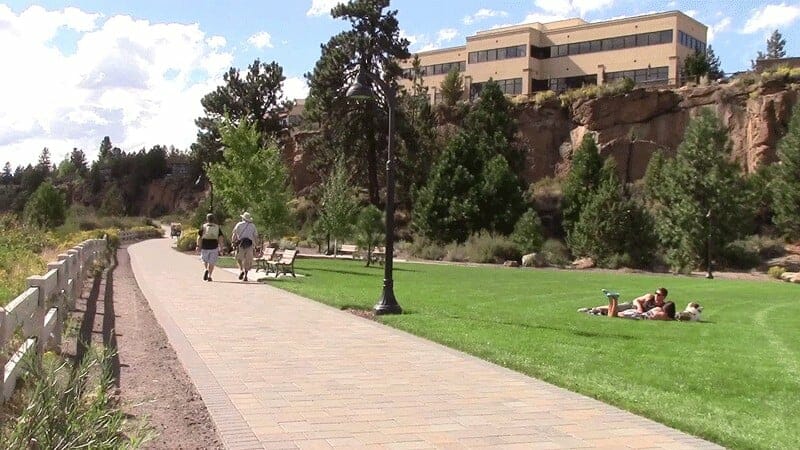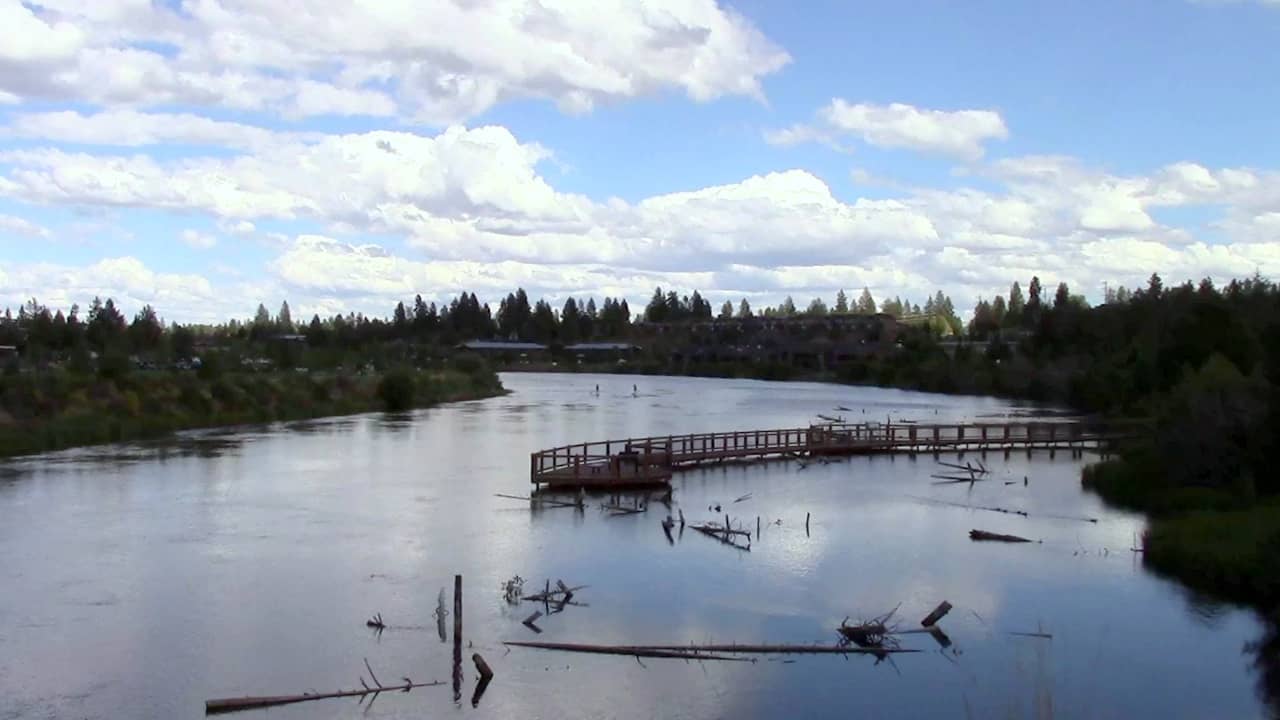Land of Accolades
There is a city in Oregon that has earned the nickname of the “Outdoor Playground of the West.” Dog Fancy Magazine named this city the “Dog Friendliest Town in America.” It’s also been called Beervana, the #1 biking town, one of the world’s best ski towns, Oregon’s best golf destination, and many other awards and accolades. The city is Bend, Oregon, and its popularity is best understood by looking at its parks.
Over the years, Romtec has developed several building projects with the City of Bend and the Bend Parks and Recreation District. Each experience has demonstrated to our staff that the City of Bend is exceptional in its approach to developing new parks and recreation opportunities. Romtec works daily with municipalities across the country and few manage their parks better than Bend, Oregon. It’s got us asking, what makes the Bend Parks and Recreation District so successful?
A Culture of Parks
Bend has had a unique culture since its incorporation near the turn of the 20th century. Throughout the city’s growth and early development, Bend attracted people with an adventurous spirit. Alexander Drake, the city’s founder, built the city through his development company with a capitalist’s mentality. Drake worked hard in Bend’s early years to buy and develop land, and the community took the same approach to developing parks.
The historic culture established by Drake laid the groundwork for a man named Vince Genna. Genna became Bend’s first Executive Director of the Parks and Recreation District in 1964 but had been working with Bend parks a decade prior. He brought a unrelenting commitment to developing, using, and managing park resources to the City of Bend.
It might not be possible to trace the origins of Bend’s culture to a single source, but most would be hard pressed to find an historic figure more influential than Vince Genna, who some have dubbed the Father of Bend Parks. Under his tenure, Bend saw its park lands grow drastically, and Genna helped establish laws that would continue to fund and grow Bend’s parks. Genna retired in 1990, but his life’s work helped enhance a culture that valued outdoor recreation.
As Genna’s career wound down in the late 80s, Bend started to grow rapidly. Over the next 25 years, Bend nearly quadrupled in size. During this meteoric rise, the Parks and Recreation district maintained a common vision. It understood that Bend was growing because of its recreation opportunities. This growth would bring in more resources and advocates to help the Parks and Recreation District develop.
The vision of the Parks and Recreation District manifested in a series of strategic plans. These comprehensive documents brought together research and planning, community and governmental input, and all other pertinent information for long-term park development. In the midst of a massive growth environment, this type of deliberate planning helped maintain consistent development of Bend’s parks. Development in Bend’s case isn’t just more parks, its better parks for more people.
Hallmarks of Success
Imagine parks designed for tennis players, golfers, runners, kayakers, dog-walkers, concert-goers, beer-lovers, children and retirees, persons with disabilities, hikers, bikers, and skiers. Now imagine a thread that binds all these parks together and you will begin to see how Bend created a successful parks system. The degree of success for Bend is the scope of people and activities that are served by its parks.
One way to see the success of Bend’s parks is to look at their buildings and designs. Bend parks each have a characteristic theme. Often the theme is based on the local history of the park or on the people from whom the land was acquired. Even though the themes are unique to each park, woven into the designs of the buildings, paths, recreation equipment, and artwork is a quality that is distinctly Bend.
The strategic planning of the Parks and Recreation District provides a consistent vision that helps unify the new park projects. Recently, Romtec worked with Bend on a restroom building for Miller’s Landing. As unique ideas about the park were being developed, there was a precedent in the strategic planning documents to ensure the new ideas did not conflict with the existing themes.
Bend has a lot of examples of parks that display historic significance in the park themes. Looking at Miller’s Landing, the land for the park was home to facilities for Miller’s Lumber Company in the 1920s. After the facilities became less profitable, the land was unmanaged and unsupervised, so Bend residents began using the site for easy river access to the Deschutes River. In planning for Miller’s Landing, the Parks and Recreation District sought to preserve that history through the park’s name and by providing a new boat launch dock and beach area.
Another way that Bend displays the unique thematic elements of a park is by highlighting the special interests of the typical park users. At Riverbend Park, there is a large river access point where many kayakers put in. The entryway of this park includes a large roundabout with a centerpiece sculpture constructed of kayaks. The sculpture offers all visitors an iconic visual that lets you know you’re in a Bend park, but it also speaks in a particular way to the people who use the park most.
These “special interest” themes visually demonstrate the success of the Bend Parks and Recreation District. Not only does the city offer parks and activities for all types of people with varying interests, ages, and abilities but it does so with unique hallmarks of consistency, local history, and unique artwork. Accomplishing these features in every new park project is something very special that many cities do not achieve.
Future of Bend Parks
The final significant cultural quality that has made Bend parks so successful is the way that the Parks and Recreation District builds for the future. A lot of the techniques still in use are closely related to the early techniques of Drake and Genna. Acquire land through development, donation, and persistence. If you look at the activity in Bend, you will still see a community that is laser focused on acquiring new land for new parks projects.
Recently, the Bend Parks and Recreation District acquired four acres of land next to the Bend Senior Center. This land will provide room for a future expansion of the senior center and will also provide better access to the adjacent Larkspur Trial. This project is a good example of how future parks project begin with land acquisition, but getting land is only the first step.
In order to continue developing new parks projects, the Parks and Recreation District has created a reliable stream of revenue. This stream comes from a mixture of taxes, program and facility fees, and a System Development Charges Fund. Bond measures are also frequently passed by the city to provide specialty funding for specific projects or certain aspects of the strategic planning. Since Bend’s population grew based on resident’s love of outdoor recreation, it is easy to see why the community is so willing to fund future park development.
Conclusion
The success of Bend is rooted largely in the history of its development. The Entrepreneurial spirit of westward expansionists like Alexander Drake built a community that values development and the outdoors. Tenacious enthusiasts like Vince Genna helped develop a process for growing public parks and the identity of a region. The boom of an engaged population provided the resources to fuel an avalanche of development. The history of Bend provided the canvas for the current success of its parks.
At Romtec, we realize that Bend is special and that not many cities have the unique characteristics that have helped build its success. Working in the industry of selling public facilities provides a unique vantage point for appreciating the quality of work taking place in Bend, but for anyone else, you only need to go there to see the success of Bend parks.

